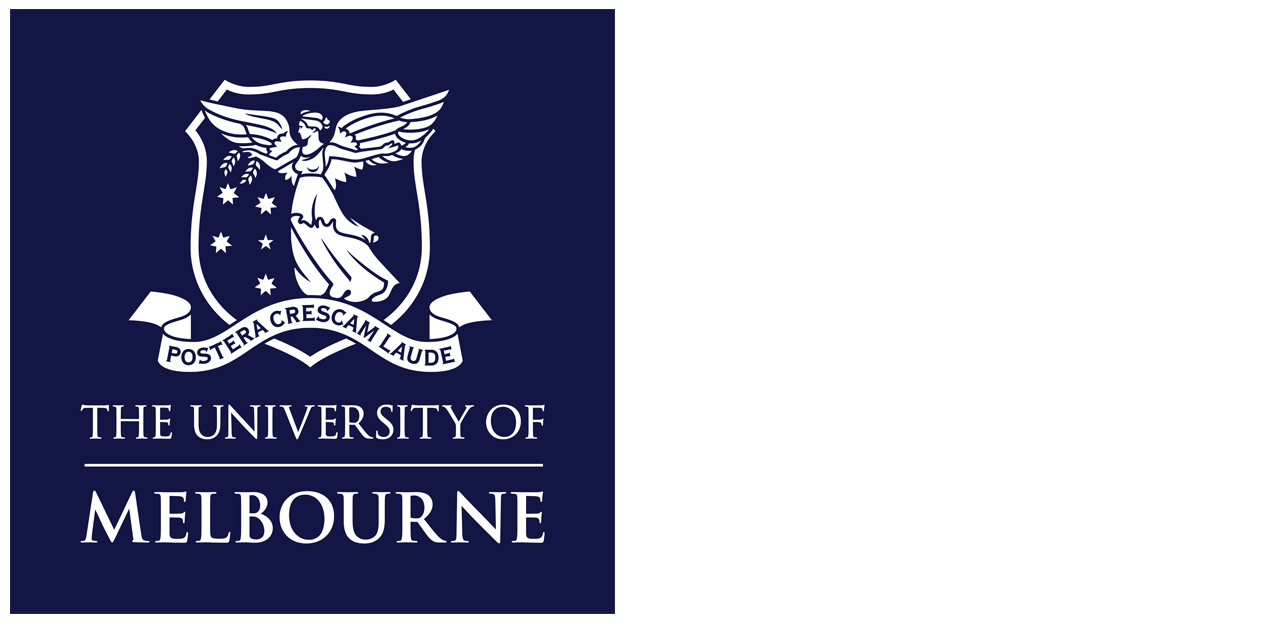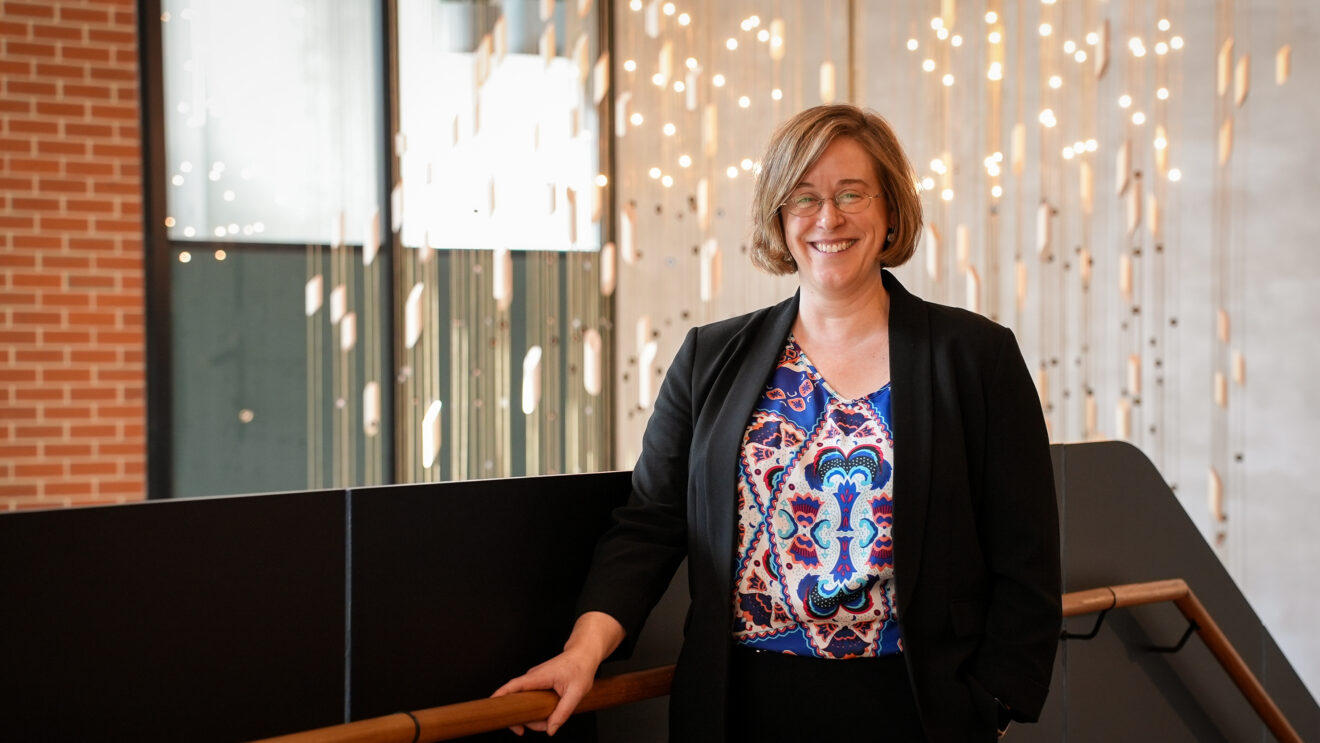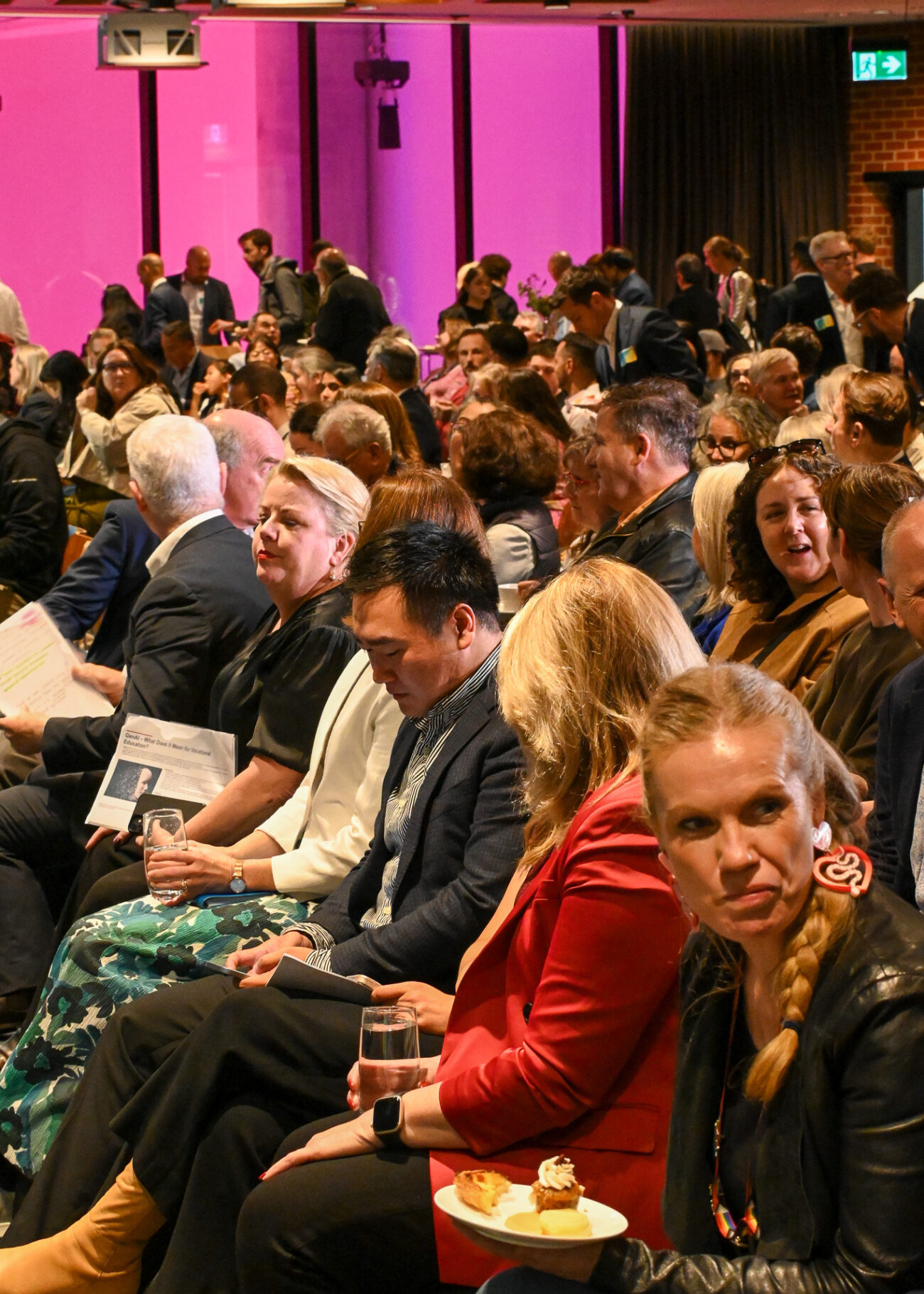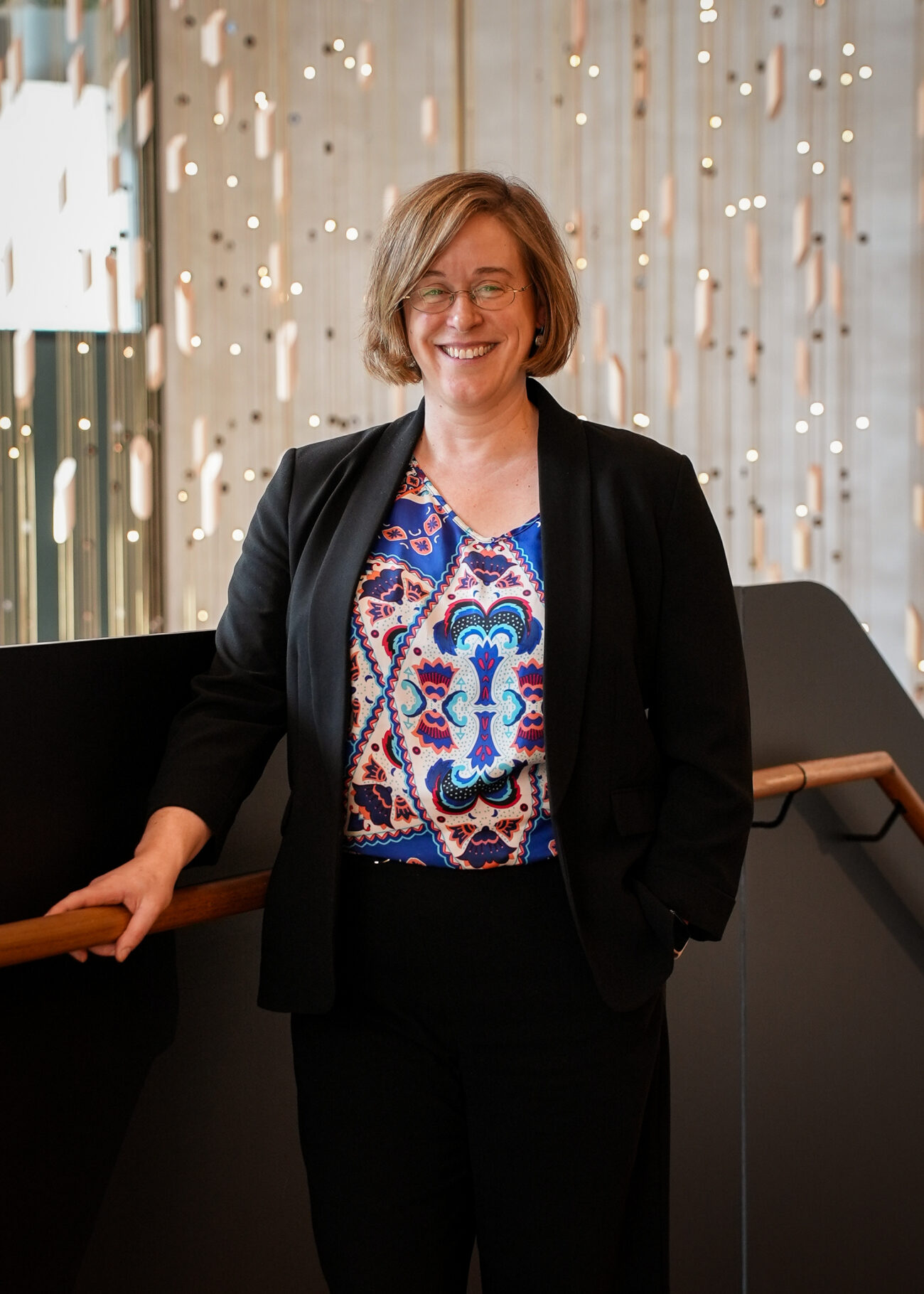

With over 15 years of experience in innovation district development, Vanessa Campbell has established herself as a collaborative and visionary leader, making significant contributions to projects across the Parkville Biomedical Precinct, Monash Technology Precinct and Melbourne Innovation District. Her work has garnered both professional and academic recognition, and has positioned Vanessa as a thought-leader in the precinct development and partnerships space across Australia.
Currently serving as Director of Innovation Precincts at the University of Melbourne, Vanessa is responsible for fostering dynamic innovation ecosystems and assets. Her work drives substantial economic benefits for Victoria, including new business formation, job creation, research advancements, and community engagement. We sat down with Vanessa to learn more about her background and ask how she is settling back in to the Melbourne Connect community after some time away from the precinct.
Can you please introduce yourself and tell a little bit about your role here at Melbourne Connect and with The University of Melbourne?
My name is Vanessa Campbell, I’m the Director of Innovation Precincts at The University of Melbourne. I work on the University's industry relationships through co-located partnerships right across the Parkville and Arden precincts.
I know that you also held a previous role within the University, can you tell us a bit about your background and why you chose to return to the University?
I originally studied physics and I was going to be an astronomer. I was well on the way to that when I had a few twists and turns in life and ended up starting my own business, and then ended up working through a lot of different projects across government and university sectors. Through that process I found that what I really love is working in a space where there are fantastic ideas and making connections between people in those kinds of spaces.
I worked for eight years with the University starting in 2011, and I worked across nearly all of the University's major capital projects over that time, including the Doherty Institute, Southbank Arts Precinct, Fishermans Bend, student accommodation and Melbourne Connect. When you work in the world of projects and they come to completion, you eventually have to leave it and move on to the next one.
I loved being the development manager on Melbourne Connect, and then the job was done, it was developed, there was an operating model, there were people coming in. When you work on a project that's the point where you begin to exit. I then went to work at Swinburne University, worked with the Victorian Government on precinct development, and then had the opportunity to come back to Melbourne Connect and actually work in one of the precincts that I had helped develop. It was the pull of Melbourne Connect that was one of the big drawcards, the idea of being able to work across the Parkville and Ardern precincts, and to work at a precinct level looking at connections between organisations was very, very exciting.

Tell us how you came to work in precinct development?
I started when working in Tasmania on regional community hubs which included libraries, community services, and community training. I then worked on project development at the University of Melbourne, but it was working on the Melbourne Connect ecosystem that really ignited things for me. I actually started a master's after I'd worked on Melbourne Connect. My master’s was in tertiary education management focusing on University-led innovation precincts. My capstone project investigated sustainable innovation precinct networking modes.
In Australia in particular, we are happy to invest in physical innovation assets. We're happy to invest in the buildings and new institutions, new businesses. However, when it comes to building horizontal connections between organisations we are less likely to go anywhere near that. Networking is one of the cheapest and most effective innovation asset for investment, and it is the one that magnifies impact after you've made the big investments in physical and economic assets. If you don't invest in networking, then you just have beautiful spaces where nobody connects with each other.
What attracted you to those project development roles in particular and why then did you choose to make the shift to a more operational role?
I've tried lots and lots of different things. I've worked in libraries, community centres, technology projects, I've run my own I.T. business, I've even developed stem cell policy and legislation and worked in organ and tissue donation. I had a significant role in Tasmania looking at pandemic preparedness, which was prior to the pandemic. And ironically at the time I thought, I'm not going to do this as a career, we're not going to have a pandemic, and then we had one. So this is not the first time I've been involved in a project that has then turned into an operating role.
I love being part of new ideas, I love working in strategy and in relationships. I think that when you get really good horizontal connections working between organisations and you get a flow of people and ideas across from one organisation to another, I think you can achieve so much more than you can vertically within an organisation. I find that the relationship side of things is what makes Melbourne Connect beautiful. It's the way that it builds connections between people that I find the most exciting about being here.
How does the tertiary sector compare for you in terms of innovation and forward thinking as opposed to other roles you have had?
Melbourne Connect sits a little outside of the university world in that it bridges the university world and organisations on the outside of that world. That's where you can see new ideas, talent, people's careers moving out of one sector and moving across into something different.
If you can get that kind of horizontal connection going, then Australia can achieve a lot more than the kind of innovation results we are achieving at the moment, where we do a significant proportion of the world's research when compared to the size of our population, but our economic complexity rates as some of the lowest in the OECD. Working in a way that bridges that gap through building networks and relationships is a very exciting space to be in.
It’s a word that gets thrown around a lot, but what does the word innovation mean to you?
When I think about the word innovation, I think about taking new thinking and turning it into real products. I'm sure there are much better definitions out there, but if you can turn an idea into a real product, a real service, then you've made it into something tangible and it's no longer just an idea, it's something that has impact.
We all have new ideas, but so rarely do they turn into something that has impact. If you can make an impact on a national and an international scale with a new idea, then I think that you are creating something that has much more of a life than something like a journal article, which is important, but not the end in itself.
Can you talk to us a bit about how you first became involved in Melbourne Connect and what that process was like?
Back in 2011 I was working on the Doherty Institute, and that was a pretty concrete concept. At the same time this group of people that was next to me were working on something called Carlton Connect, which was much less tangible. Much later I understood how well they were crafting what Melbourne Connect as a precinct was going to be.
When the University bought the Royal Women's Hospital site they wanted to do something that transformed the way that the University engaged with industry. For a while the University was looking at either doing this on its own or partnering with the government, but in the end, the university decided to go for a public private partnership (PPP) and expand upon the work of the Carlton Connect team. Developing the precinct together with a consortium of industry partners is something that's made this place a lot stronger. Lendlease, in particular, brought a really good commercial counterpoint to the way that the University worked and challenged us to create something that we wouldn’t have otherwise achieved.

It was the excellent work that the original Carlton Connect team had done on the mix of assets to form Melbourne Connect that made it work so well. They had really looked around for international best practice and worked out what kind of mix would go into a precinct like this. You've got a cultural anchor, you've got accommodation for a more vibrant 24/7 environment, you've got childcare, you've got university, you've got established businesses and start-ups, and you've got a huge networking space that enables all of these parties to come together — it's a networking engine for the Parkville precinct.
Do you feel like that term 'innovation' is overused and that it's losing its meaning?
People approach the word innovation with a sense of excitement. What they often leave out of their thought process is that it's really hard and it fails a lot. These products and services are new, that's why they don’t always work. Sometimes you think it's going to be this amazing thing, but are we willing to fail to make it happen? If the answer to that is no, then are we really willing to be more innovative?
Innovation is a word that is sometimes applied when perhaps we might just be talking about incremental improvement — we might be talking about technology adoption from other places. If it's real innovation, then it's blood, sweat and tears and you've got to be prepared to fall flat on your face. You've got to put yourself out there on a limb.
How did the process of developing Melbourne Connect in partnership with Lendlease compare to the development processes of other precincts that you have been involved with?
It was the original Carlton Connect team that thought about the way that the University would engage with industry and it was Ian Marshman, our Senior Vice-Principal, at the time, who felt the precinct would be best developed with an industry partner.
I really understand in hindsight why he made that decision. It was an excellent decision for us and for the progression of the project. In my experience the University has often partnered with the government, there's a level of alignment in ways of working across those two organisations. But once you bring some commercial drivers you start thinking differently about the type of space that you need, the pricing of those spaces, the type of services that are going to be appealing to commercial tenants. Then you start creating something that is attractive to business as well as to the government and the University.

How much of the thinking behind Melbourne Connect has influenced the development of places like the Fishermans Bend precinct that is currently being developed?
It influences a great deal. We sit right next to the Fishermans Bend team just like I used to sit next to the old Carlton Connect team and we look at what works and what doesn't work within Melbourne Connect, and we bring that thinking to the way that Fisherman's Bend might work.
That said, Melbourne Connect is a networking engine, it's not about sharing lab space, it's not about sharing wave tanks or other expensive facilities. It's about networking. Fisherman's Bend will have some really significant research infrastructure that brings collaboration opportunities. Melbourne Connect on the other hand, has to stand or fall based on the connections alone. You're not coming in here because you are going to be able to use a specific laboratory, you're coming in here because you want to make connections that you can't make elsewhere. So it's a different value proposition, but it means that that our Melbourne Connect relationship thinking will translate to our next precincts, such as Fishermans Bend.
How well do you think all the planning and development has all come to fruition at Melbourne Connect?
I think it's working better than we had even forecast, and it's not at full maturity yet. It is still in its own start-up phase but I think it is showing huge potential and a growing international reputation. We're getting an international delegation through here every week, which is exciting. The speed of that reputation growth is probably not something that I'd expected. It's incredibly exciting to walk through and see the place, because it's beautiful, but it's even more exciting as a relationship kind of person to see that people have been able to bring their own experiences and ideas and implement those to make this an even stronger place for all of us to be in.
I don't think you have that opportunity heaps of times in your career to put your best work out in the world and then have people who can run it and do an even better job than you thought. It's pretty exciting. You can see the passion and the expertise that others have added to what we started, and they have improved upon it.
Can you tell us a bit about your role within the development of the other precincts?
There are precincts on two levels, for example you have the Parkville precinct, and then significant developments such as Melbourne Connect within the broader Parkville precinct. My role is to think about the broader environment, as well as industry engagement within specific developments.
I look at the tenancies, the opportunity to co-locate within a facility and what that might look like and what we might be trying to achieve strategically through those commercial partnerships. I look at how we're going to manage the partnerships once someone's in the building in order to achieve something out that is more than just a rental payment. Then I also look at the broader ecosystem— how does that particular partnership opportunity sit within the broader ecosystem and how can we grow an ecosystem where people are more likely to make valuable connections and share ideas, simply by working in physical proximity.

What role do you see Melbourne Connect playing in the broader Australian innovation ecosystem over the next ten years?
There are a range of strong innovation precincts across Australia and internationally. I think that Melbourne Connect is one of those, and although there are precincts that have been around for longer that are further along their trajectory, we're all learning from each other.
Melbourne Connect was developed informed by the best practice of other precincts. I would hope that the next precincts that come along will be built on some of the best practice of Melbourne Connect. I think it's part of a number of fantastic precincts across Australia and that we are too small in Australia to be totally disconnected from each other.
I'd like to see Melbourne Connect play a stronger role across the Parkville and Melbourne ecosystem, and to partner with other precincts around Australia. When you know your value proposition and you know the areas where you have competitive advantage, then we can connect that capability between precincts and show present a broader regional or national offering.. We are not kicking enough goals here in Australia, in terms of achieving impact from our research, to stand alone.. We are far better off working together and to have a team Australia approach.
What's your favourite area of the building?
The Superfloor. I worked so much on the Superfloor to work out what it was and how it was going to function as a space to bring people together regardless of whether you're having a coffee with one person or if you're having an event with 500 people.
It's a big space, it’s the size of a full-line supermarket, and I was initially worried that it would feel empty or cavernous Our architects at Woods Bagot were fabulous. Once we were able to spell out strategically what we wanted, working with Lendlease and Woods Bagot allowed us to achieve it. It is a space that I'm proud to sit within and proud to be part of. I sometimes get distracted during events when looking around and think, it works, it actually works. You see the relationships that are formed as a result of a space and programs that work well, so the Superfloor is the bit that I love the most.
Thanks for your time, Vanessa, we look forward to seeing more of your work come to life across Melbourne Connect and the other precinct developments.